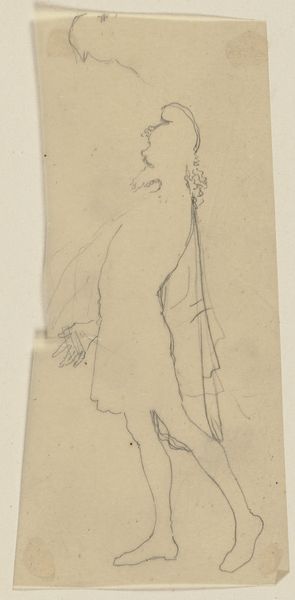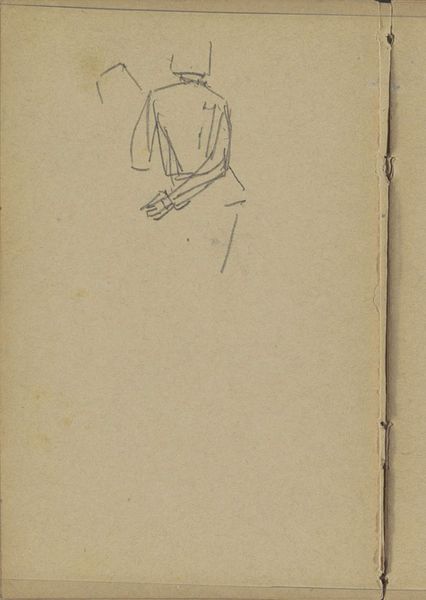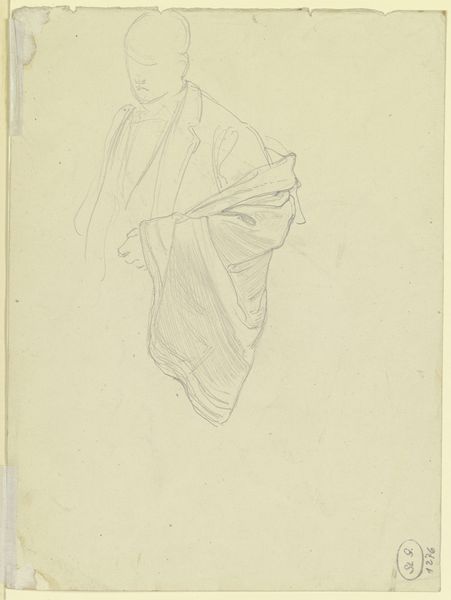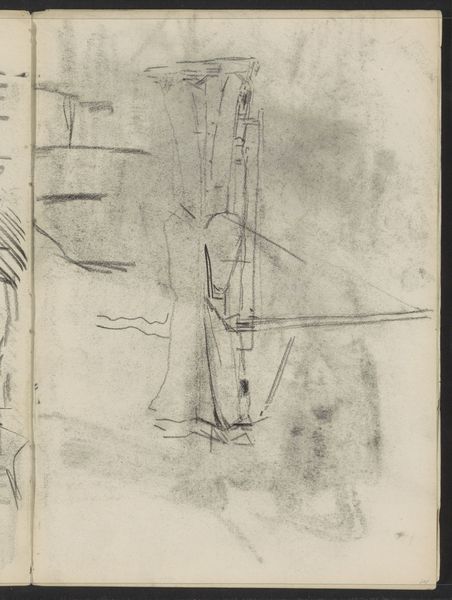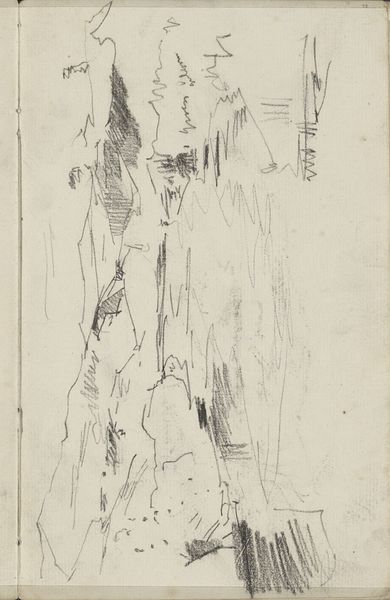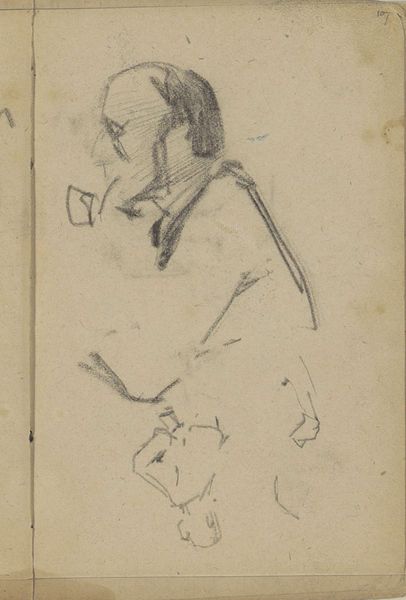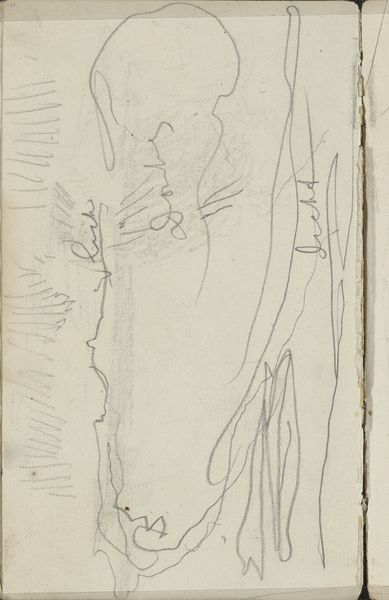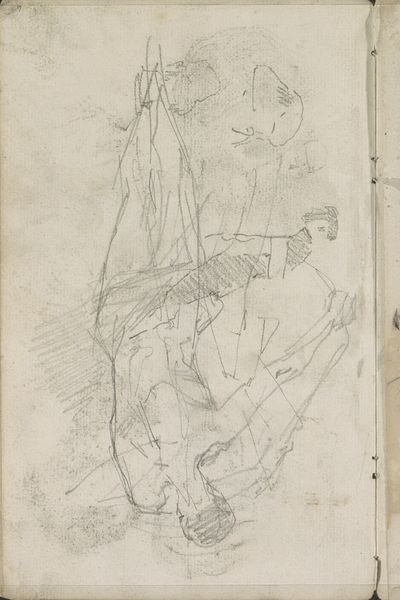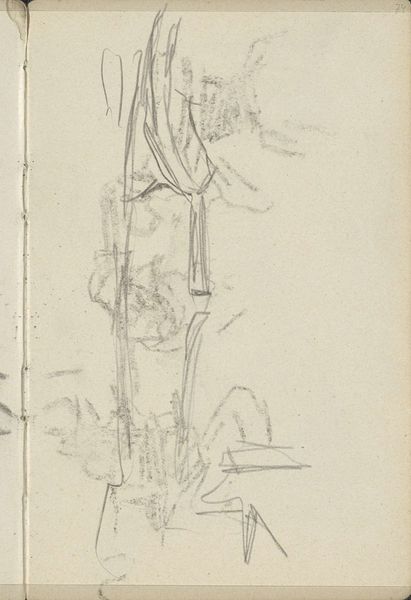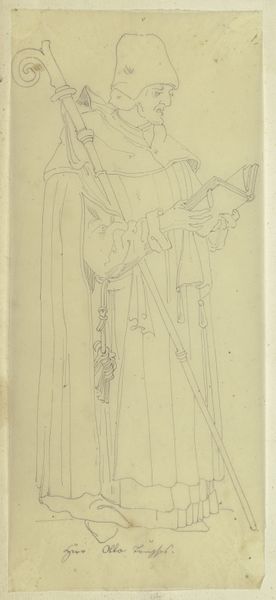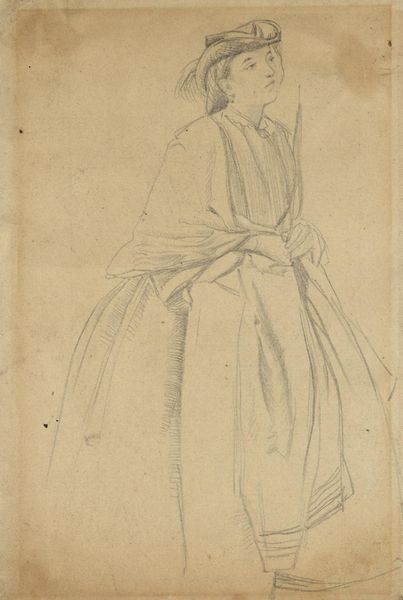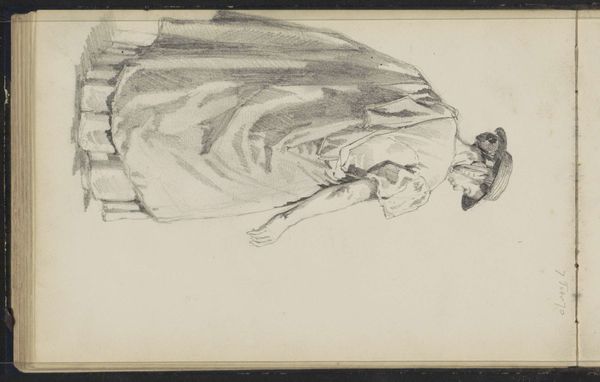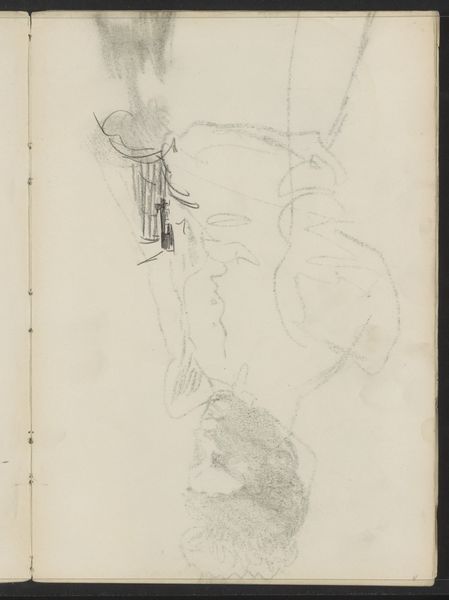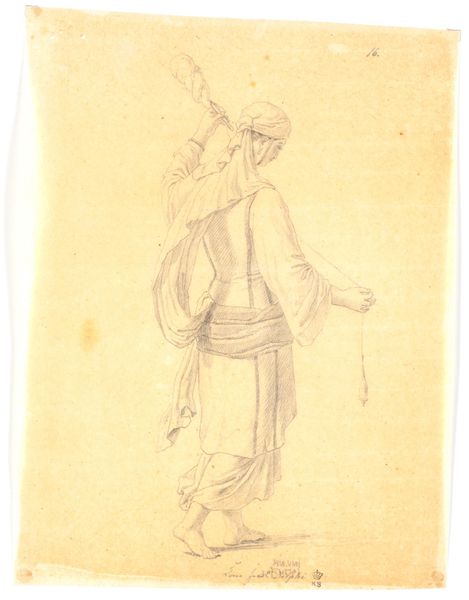
Copyright: Rijks Museum: Open Domain
Curator: Oh, she's lovely. Ethereal almost. A fleeting impression captured on paper. Editor: Indeed. This is "Standing Woman, possibly Eastern," a pencil drawing by Isaac Israels, created sometime between 1887 and 1934. It's part of the Rijksmuseum's collection. Curator: Israels really catches the light. Look at the soft, almost tentative lines. It feels like a memory, doesn't it? A whisper of a person rather than a declaration. I get this feeling of quiet grace. Editor: The ‘possibly Eastern’ in the title reveals the orientalist trend present during Israels' time, one that romanticized and often misrepresented people and cultures of the East. It speaks to the artistic license taken at the time, shaping perceptions through a Western lens. The very openness of the title, "possibly", hints at the blurred line between reality and imagination back then. Curator: Yes, there's that slightly distanced perspective you mention. And yet, there’s an undeniable warmth too. I wonder what stories she holds? Or what story Israels imagined for her? Look at how the lines suggest her form beneath her clothing. There’s life there. Editor: I find it fascinating how these sketches functioned within the art world. Often unseen by the public, these sketchbook works allowed for raw experimentation, capturing fleeting moments of inspiration outside of the pressures of the market. They offer a glimpse into the artistic process itself, often glossed over in more formal exhibition settings. Curator: That's it exactly! We are seeing an unguarded moment of artistry. A pure expression without the filter of expectation. Beautiful, really. To see the artist thinking through his pencil. Editor: It does force us to consider how context frames our interpretations of art and its role in constructing narratives, something a casual observer may not always appreciate without institutional insight. Curator: Absolutely, context deepens the experience but it should never take away from how something touches us personally. I think that this slight sketch manages to have both the intellectual depth that museums aspire for, and personal resonance with the heart of an artist trying to capture a bit of magic in pencil. Editor: Agreed. The power resides in that combination. A fleeting sketch carries history within it but invites personal interaction that no large artwork can.
Comments
No comments
Be the first to comment and join the conversation on the ultimate creative platform.
